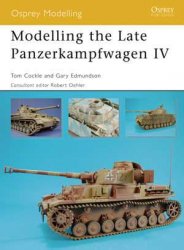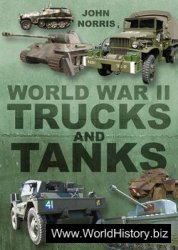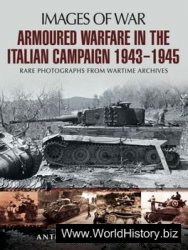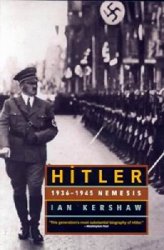We have discussed the way in which certain kinds of animal were depicted and perceived in the early literature. But underpinning any analysis of the roles different beasts could play are two basic principles concerning animals in general. The first is the concept of the enchanted creature, which possesses qualities beyond its natural limits: the properties of human speech or wisdom, or the ability to communicate with the world of the supernatural. The second, related, idea is that of shape-changing, skin-turning or transmogrification, in which an animal has assumed a different form, either from another animal or from a human or divine being.
A good example of the enchanted beast is the Salmon of Wisdom, a creature
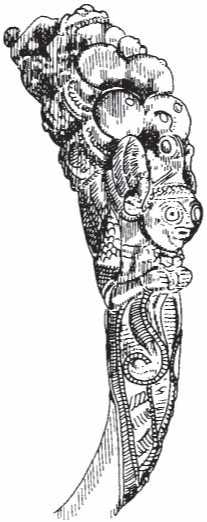
Figure 7.17 Detail of gold armring, in the form of a figure of a goddess surmounted by a bird of prey, fourth century BC, from the grave of a 'princess' at Reinheim, Germany. Paul Jenkins.
Who appears in both Welsh and Irish myths. In the 'Tale of Culhwch and Olwen', he is known as the Salmon of Llyn Llyw, one of the oldest beings on earth. He is one of the group of creatures consulted by Culhwch and Arthur as to the whereabouts of Mabon, the divine hunter. The concept of the Salmon of Wisdom or Knowledge is further developed in an Insular legend concerning the hero Finn. In the story, Finn comes across the bard Finnegas, who has been fishing for the Salmon for seven years, in a pool. As Finn arrives, the bard catches the fish and gives it to Finn to cook, bidding him on no account to taste the fish. But Finn burns his thumb on the hot flesh and puts it in his mouth: he begins instantly to acquire knowledge; Finnegas then gives him the fish to eat and Finn becomes infinitely wise. The Salmon itself, we are told, acquired its omniscience by eating the nuts of the nine hazel trees growing beside a well at the bottom of the sea.91 The implication must be that this wisdom comes from the chthonic, underworld regions.
We know of other enchanted beasts, which in some manner transcend their normal state. Magically swift horses, Gwyn and Du, are used by Culhwch to track down the skin-turned boar Twrch Trwyth. Gwyn Dun-
Mane is described as being 'as swift as the waves'. Wise and knowledgeable beasts help Culhwch in his quest: the Ouzel (a mythical bird) of Cilgwri; the Stag of Rhedynfre; the Owl of Cwm Cawlwyd; the Eagle of Gwernabwy and the Salmon of Llyn Llyw, all exceedingly old.92 Some enchanted animals are destructive and dangerous to humans: in 'Peredur' a magic stag is incredibly fast and savage; it has a single sharp horn, kills all the other creatures it encounters and consumes all the foliage in the forest.93 Exotic animals such as lions occur in 'Peredur' and in 'The Lady of the Fountain'. In the Irish 'Voyage of Teigue', an island is populated by sheep as big as horses: one flock consists of enormous rams, one of which possesses nine horns, is extremely aggressive and attacks men. It is so big that when Teigue kills it, thirty men are needed to carry the ram away.94
In many early Celtic stories, a peculiar rapport between men and animals is recorded. In the 'Tain', Queen Medb has a bird and a squirrel habitually perched on her shoulder, perhaps symbolizing her link with the land. We have already noted the affinity between Conall Cernach and the treasure-guarding serpent. In a Welsh legend Owein, keeper of the forest, has the power to summon all the denizens of the woodland, who pay homage to him. Similar incidents are found in early Irish Christian tradition, where many saints are recorded as having peculiar power over the animal world. An example is St Ciaran of Saighir, who tames a wild boar which then builds a monastic cell with its teeth. Both it and other wild creatures - a fox, badger, wolf and stag - relate to Ciaran as disciples to their master or as monks to an abbot.95
The most prominent aspect of the enchanted beast theme is metamorphosis or shape-shifting. Both the Welsh and Irish traditions are full of stories that illustrate it. It can occur in one of three ways: a god or superhuman individual changes from human to animal form or vice versa from choice; the shape-changing is imposed on one being by another, as a punishment or in revenge; or a creature may be transformed for a particular purpose.
If we look first at shape-shifting as punishment or revenge, we can see a recurrent pattern whereby heroes or gods deal with unacceptable behaviour by depriving the malefactor of human status and causing him or her to adopt an animal shape. In most instances, however, the metamorphosed creature retains all its human faculties, apart from its physical form. In the Mabinogi and the 'Tale of Culhwch and Olwen', the punishment theme is a recurrent one. In 'Math' (the Fourth Branch), Math, Lord of Gwynedd, punishes his nephews Gwydion and Gilfaethwy for their treachery by turning them into three pairs of different animals for three consecutive years. Each pair produces offspring, which are born in the forms of a fawn, a piglet and a wolf cub. Math changes each one into a human boy, but each retains his animal name, and is thus never entirely free of the zoomorphic association: the names are Hychdwn (hwch means 'pig'); Hyddwn (hydd means 'stag') and Bleiddwn (bleidd means 'wolf').96 In the Culhwch quest tale, a central character is Twrch Trwyth, an enchanted boar accompanied by seven young pigs (once men), including one Grugyn Silver-Bristle. When asked by Arthur how they came to be in pig form, Twrch Trwyth replies that he was once a human king but that God had transformed him and his followers into pigs as a punishment for their evil ways. In the same story, Ysbaddaden Chief Giant, father of Culhwch's lover Olwen, recounts how two oxen, called Nyniaw and Peibiaw, which Culhwch must obtain for him, are humans transformed into cattle for their sins.97 What is interesting in the Twrch Trwyth episode is that when Arthur's interpreter Gwrhyr addresses Twrch Trwyth, he goes to him not in human form but as a bird, as if communication were easier between beast and beast (even of different species) than between animal and human.
In Irish mythology, individuals were transformed from human to animal shape either in revenge for an alleged wrong or as a punishment for antisocial behaviour. Thus Fuamnach, the jealous wife of Midhir, turns Etain into a pool of water, whence she is transformed next into a worm and ultimately a purple fly.98 In another jealous act, Lir's wife Eva turns her four stepchildren into swans for 900 years.99 The Irish sea-god Manannan has a 'crane-bag' made from the skin of a crane who was once a woman, transformed because of her jealousy.100 In some instances, transmogrification appears to have been imposed for no clear reason. Thus, the 'Tain Bo Cuailnge' has as central characters two bulls who were once herdsmen. They have gone through multiple changes, but they began as humans.101 In the Fionn Cycle, the Black Druid turns Sava, Finn's future wife, into a fawn, for some purpose of his own, but not as a punishment, as far as we know. Perhaps transmogrification was a means of obtaining power over another being. There are other instances of coercive transformation where we are not sure of the reason for it. Thus, in a tale of Oenghus, the Irish god of love, his first love, Derbrenn, has six pigs who had been her foster-children before their shape-change.102 We know of two transmogrified dogs, Bran and Sceolang who had been the human nephews of the hero Finn.103 In another Finn story, we hear of the four sons of the Hag of the Temple who are in the form of cranes and can only be rescued from this state by magical blood.104 Some individuals are transformed into animals not as a punishment for anything but in order to fulfil some particular purpose of the transformer. This is often associated with the Otherworld: Irish enchanted pigs or stags may be metamorphosed humans who, in their animal form, lure their hunters to the Otherworld or are the cause of their destruction. Thus Diarmaid's foster-brother, an enchanted boar, is
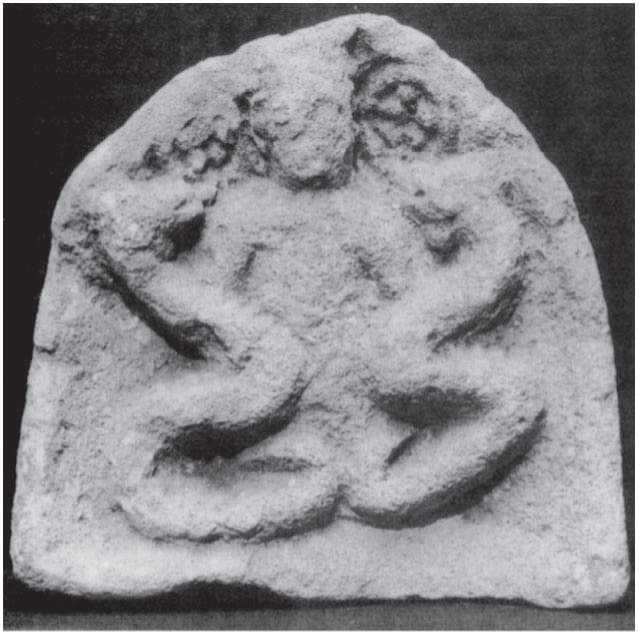
Figure 7.18 Stone relief of Cernunnos, with antlers and ram-horned serpents forming his legs, Cirencester, Gloucestershire. Betty Naggar.
The instrument of Diarmaid's death, used by the jealous Finn in order to rid himself of his rival for the affections of the beautiful Grainne.105 Elsewhere in the Fionn Cycle a deer, which is actually the god of the underworld in disguise, entices Finn the hunter to his sidh or Otherworld dwelling. In another tale about Finn, it is a metamorphosed boar who lures him to the underworld.106
Very often, transmogrification from human to animal form takes place by choice. Thus in 'Manawydan' (the Third Branch of the Mabinogi), the magician Llwyd sends his wife and her women as mice to eat Manawydan's corn, in revenge for a wrong done by Pwyll, former lord of Dyfed. The story chronicles the women's desire to become mice so that they can perform this deed of destruction. In another voluntary shape-shifting episode, Finn's grandmother changes herself into a crane so that she can take to the air and save her grandson from falling to his death over a cliff.107 Sometimes gods or heroes choose to spend time in different animal guises: thus the Irish Fintan sojourns for long periods as a salmon, an eagle and a hawk.108 In 'The Dream of Oenghus', the swan-girl Caer is carried off by Oenghus who himself adopts swan shape.109 Midhir and Etain escape from her husband's court in the form of swans,110 by means of the god Midhir's powerful magic. In one of the tales of Cu Chulainn, the young hero is wooed by Derbforgaill, who takes the form of a swan.111
The most dominant of the voluntary shape-changers are the Irish battle-goddesses, the Badbh and the Morrigan, who can skin-turn at will to raven form and by their horrific presence can wreak havoc among armies. In the story of an encounter between the Morrigan and Cu Chulainn, the goddess first appears to him as a beautiful young woman. It is the eve of battle and Cu Chulainn has more important things on his mind than amorous entanglements: he spurns her impatiently and, in her resentment, she attacks him first in the form of an eel, then a wolf and finally as a red heifer,112 this last signifying her Otherworldly status. But it is usually in the form of a raven that she appears to the Irish heroes. The Badbh is another such goddess: as Badbh Catha, or Battle Crow, she shows herself to hapless men as a harbinger of doom. In 'Da Derga's Hostel', she appears ambivalently as a crow or black-clad, crow-like old hag, prophesying King Conaire's death.113
The reason why traditions developed whereby the world was inhabited by supernatural beasts and by beings transformed from human to animal form needs to be considered. One important point to realize is the apparent ease of interchange between anthropomorphic and zoomorphic perceptions: there was no rigid barrier in the Celtic mind between the human and animal form.114 This must imply that animals were not considered to be significantly lower in status than humankind. In addition, the properties of animals - speed, sharp hearing, keen sight, the ability to fly - may have elevated them in Celtic eyes and have caused them to be perceived as in some ways superior to humans. We cannot know how and why beasts were given such importance in this earliest Celtic literature, but the attitude to the animal world which is projected in the vernacular stories reflects perceptions which are clearly presented in the iconographic evidence, and to which we turn in the next chapter.
Conchobar laid his hand upon his son, Finnchad Fer Benn, the Horned Man - so called because of the silver horns he wore. . . .
(The Tain)




 World History
World History